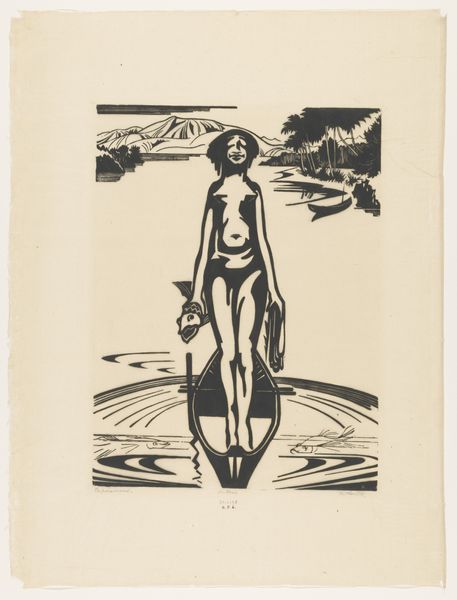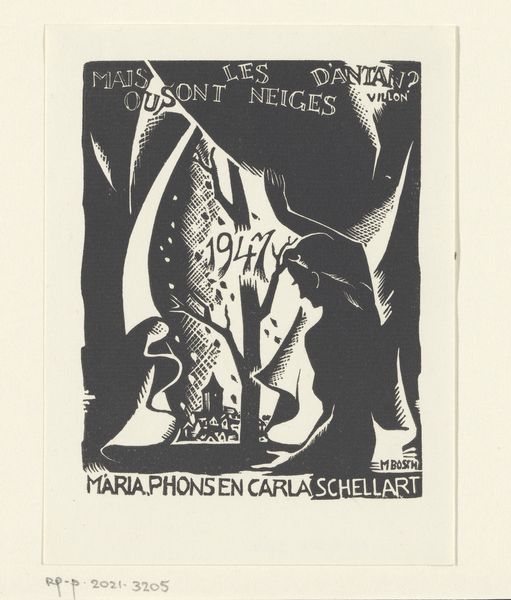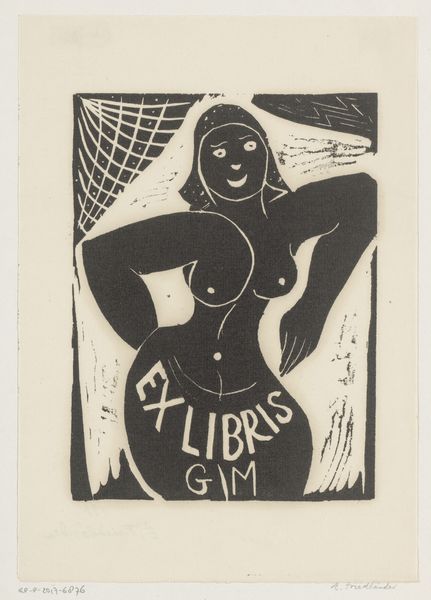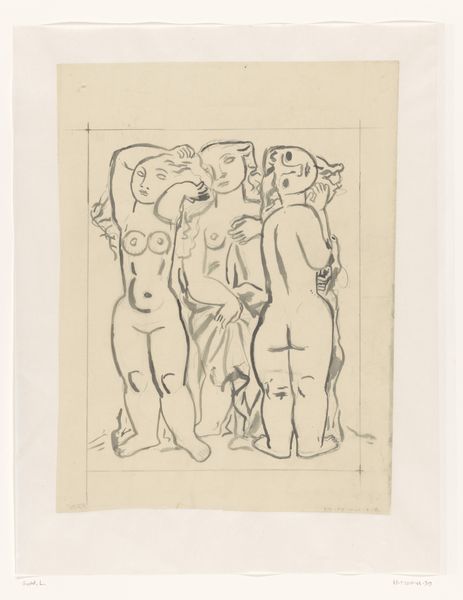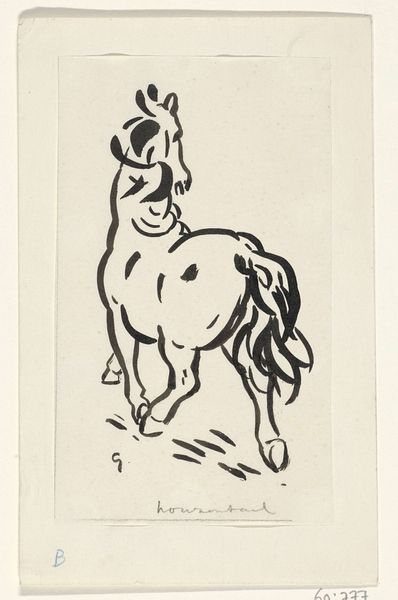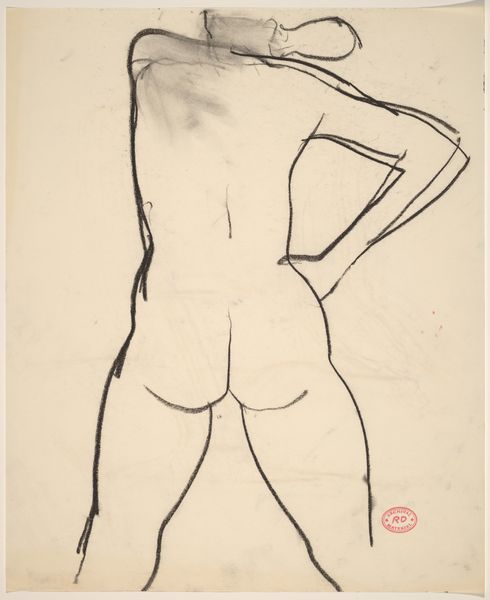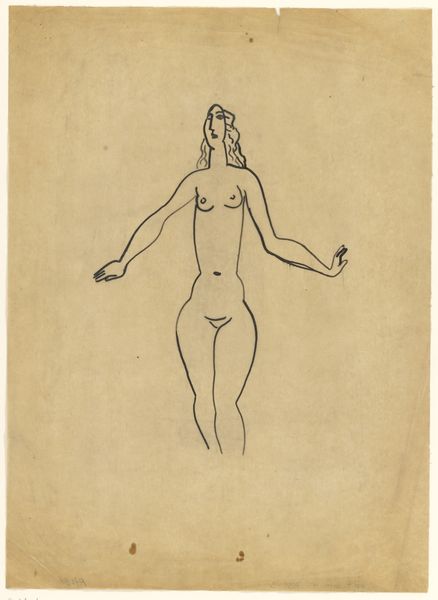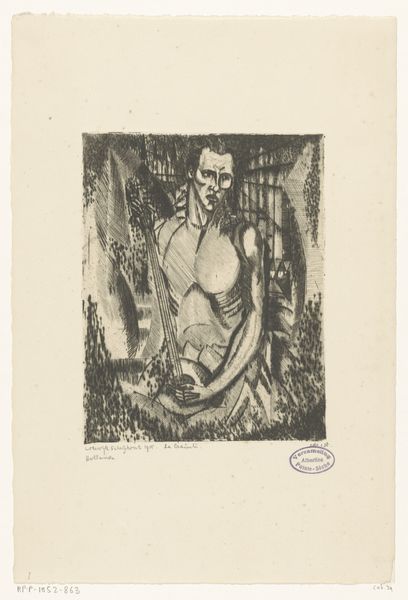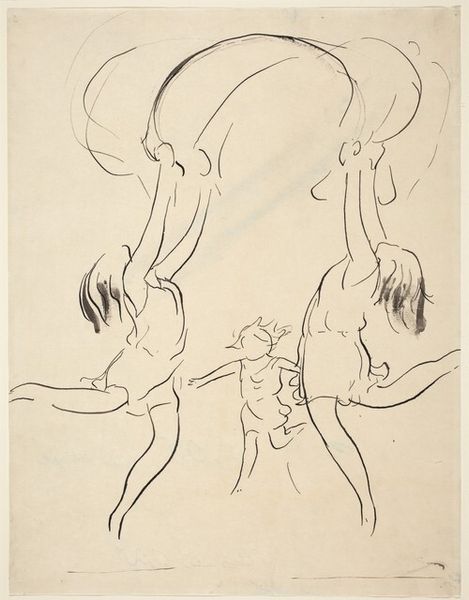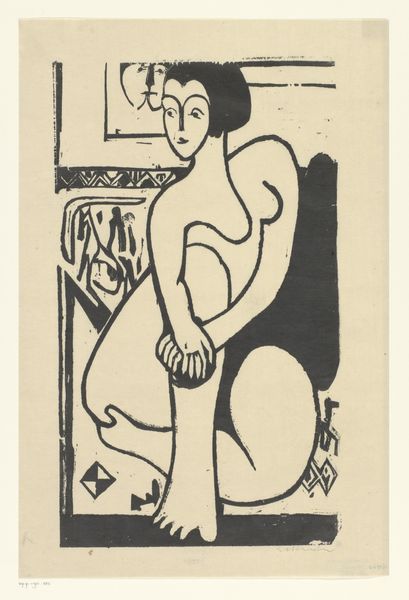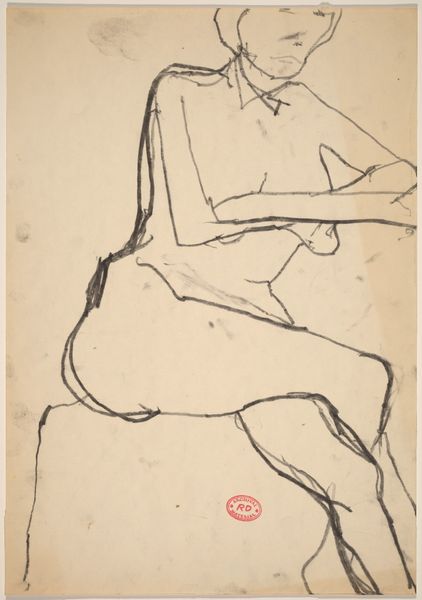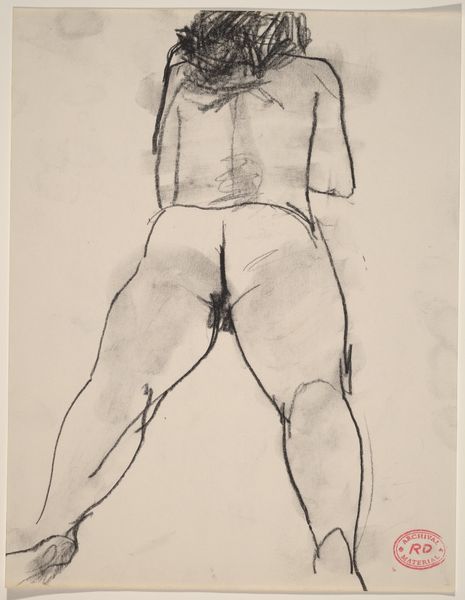
Dimensions: height 378 mm, width 280 mm
Copyright: Rijks Museum: Open Domain
Curator: Our next stop brings us to Leo Gestel's 1933 drawing, "Female Nude with Dots," rendered in ink. What strikes you immediately about this piece? Editor: The immediate feeling is one of fragility. The thin lines, the speckled texture – it's like a fading memory captured on paper. Curator: Indeed. Gestel was deeply invested in the visual language of his time, adapting Art Nouveau motifs here. Note the sinuous curves, particularly in the figure's pose and hair. These contrast strikingly with the geometric lettering surrounding the image. Editor: And let's not forget the inscription, "Paul Fierens, L'Art Hollandais Contemporain", which situates the drawing within a very specific cultural conversation. Who was Paul Fierens, and what was Gestel implying by including him? Curator: Fierens was an influential art critic who championed modernism. The piece potentially functions as an announcement or frontispiece. Gestel perhaps seeks to align himself with, or even challenge, Fierens' vision of Dutch contemporary art through the stark stylistic decisions present in the work. Editor: The social role of an artwork isn’t necessarily separate from formal explorations. Considering Art Nouveau emerged in the late 19th century, does the invocation of that movement evoke certain historical connotations for Gestel? The somewhat anachronistic style may subtly gesture at tradition and heritage. Curator: Intriguing. The distribution of dots functions as a key structural component; it gives weight and form while the lines provide structure, directing the viewer's eye, particularly in areas that are critical to defining her form, or creating depth within the background "face". Editor: So, while ostensibly a simple drawing, this artwork engages complex issues of identity, artistic legacy, and the dynamics of the contemporary art world in 1930s Netherlands. Curator: Precisely. It's a subtle commentary layered into a deceptively simple image, and one which perhaps pushes the boundaries of its medium. Editor: Thank you. Looking at this piece from an art historical perspective has helped to show how a specific work engages with wider cultural trends. Curator: It has been equally rewarding to decode its aesthetic intentions as the drawing, line by line, constructs its compelling visual argument.
Comments
No comments
Be the first to comment and join the conversation on the ultimate creative platform.
